The House of Yes is an unapologetically loud, glittery bastion of weird in a neighborhood that prides itself on being unique. The Bushwick nightclub promises a delightfully strange good time, marked by unflinching acceptance, but its presence in a rapidly gentrifying neighborhood has invited some scrutiny.
Like much of Brooklyn, Bushwick is changing, creating an odd juxtaposition of opportunity and loss. More than 25 percent of Bushwick residents have income below the New York City poverty threshold, a higher percentage than in Brooklyn and New York City as a whole, according to New York City Community District Profiles. Meanwhile, as rent prices skyrocket, local leaders grapple with the potential rezoning of the neighborhood, and a spate of new visitors descend on Bushwick to take in the nightlife and graffiti tours. House of Yes is a visual representation of some of the larger social dynamics at play.
It raises a question: What responsibility, if any, does a venue like this have to respect and uphold the cultural history of a neighborhood?
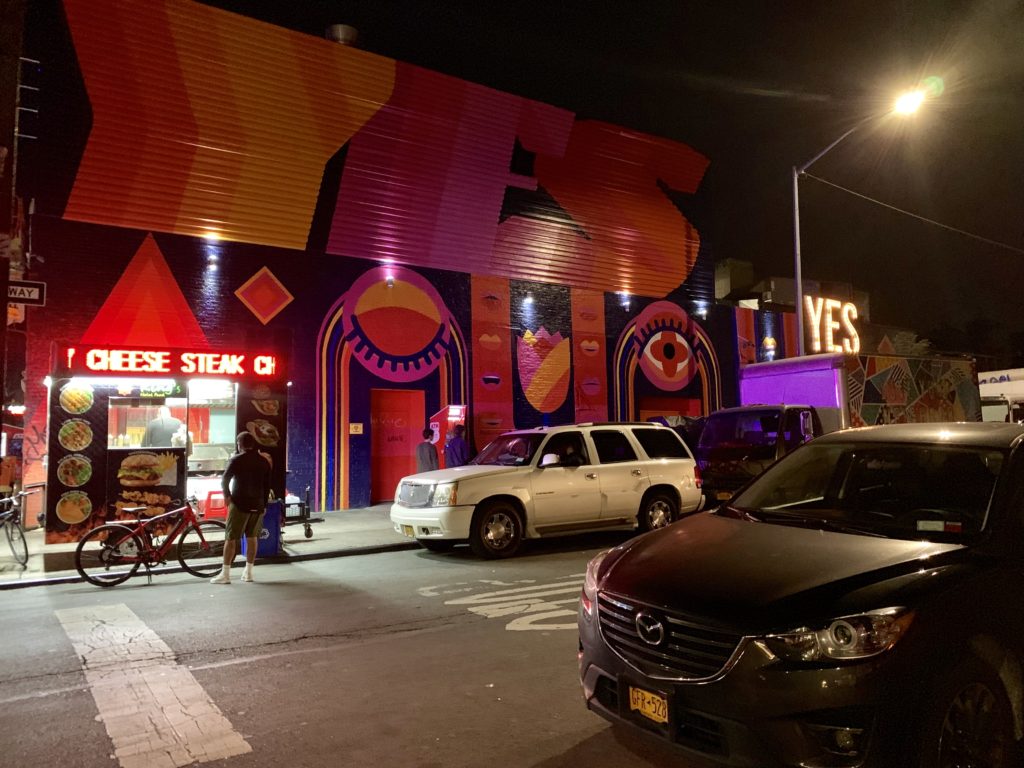
Currently in it’s third iteration, House of Yes was the brainchild of two co-founders, Kae Burke and Anya Sapozhnikova, who opened it as a Troutman Street artist collective in 2007, which burned down a year later in a fire. Sapozhnikova and Burke reopened House of Yes as an entertainment venue in East Williamsburg in 2008. After being driven out by rising rent, they partnered with Justin Ahiyon and Ilan Telmont to open the current location on Wyckoff Avenue in Bushwick, near the Jefferson St. L-train, which runs from Manhattan to Brooklyn. The massive building, painted with ‘Y E S’ in blazing pink, yellow, and orange has gained massive popularity, inviting a wave of new visitors to Bushwick.
The club looks like it was built from the remnants of an old Halloween superstore. There are streamers, an inflatable unicorn, and lots and lots of glitter. The bathrooms are bedazzled. Disco balls hang from the ceiling, along with aerial performers. Dancers regularly perform on small stages, high above the dance floor – and occasionally in a human-sized cage hanging above the bar. In the patio area, a pile of colorful mannequins, missing various body parts, sits atop a wooden box bearing the hand-painted sign ‘Love thy neighbor, please keep voices down.’ The venue has received more than twenty noise complaints since 2016, according to a New York City 311 report.
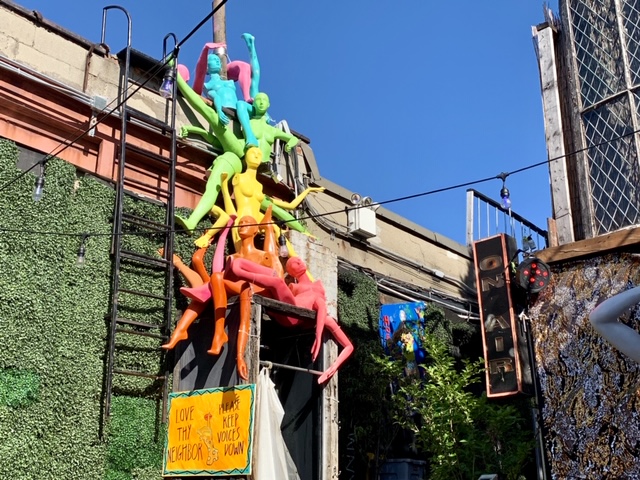
Costumes are encouraged, and often required at the many themed nights at House of Yes.
Ticket prices can run to around $50, depending on the event. A House of Yes
co-founder, Kae Burke, said that Bushwick is now an entertainment destination,
and that people generally need a disposable income to enjoy its newer luxuries, like artisanal pizza, a show ticket, or an extra drink at the bar. Burke declined to be directly quoted for the article.
Many local business owners say the increased foot traffic surrounding House of Yes has been good for business. A bartender at The Cobra Club on Wyckoff Avenue, Xandra Stegmaier, says she sometimes sees folks coming into the bar who didn’t want to pay the House of Yes cover that night. Cameron LaPierre, a bartender at Idlewild on St. Nicholas Ave. says partygoers will often stop by Idlewild for a drink or a round of shots before heading to House of Yes. “We’re the pregame,” said LaPierre.
House of Yes attendees who buy tickets online are required to agree to club rules, including a consent requirement for any kind of physical touch. Resy Clement, a House of Yes DJ, says she feels safer at House of Yes than some other nightclubs she frequents.
On “Dirty Thursdays,” when the club does not charge a cover fee at the door, a House of Yes employee who goes by Crimson Kitty gives groups of attendees the rundown on the venue’s house rules before they enter. Last Thursday she herded a group of customers into the area just outside the club entrance, affectionately referring to them as ‘kittens.’ “We have zero tolerance for violence, discrimination and harassment,” she said. “Keep it cute for everybody else in the club. Consent is mandatory.”
The club can be seen as both a symptom and a cause of the demographic changes in Bushwick.
Carles Velez, general manager of the nearby bar, The Rookery, says he believes House of Yes changed the dynamic of the neighborhood, although Burke says she believes the neighborhood had gentrified before House of Yes opened up. Velez says he has seen an increase in visitors in recent years, especially on the weekends when young people flock to Bushwick for a wild night out.
“I feel like there’s two Bushwicks: the one we see all day and then there’s the weekend,” said Velez. “My regulars will not come out here on the weekends. If I do see them, I don’t have time to talk to them.” Velez attributes some of the increased foot traffic to House of Yes.
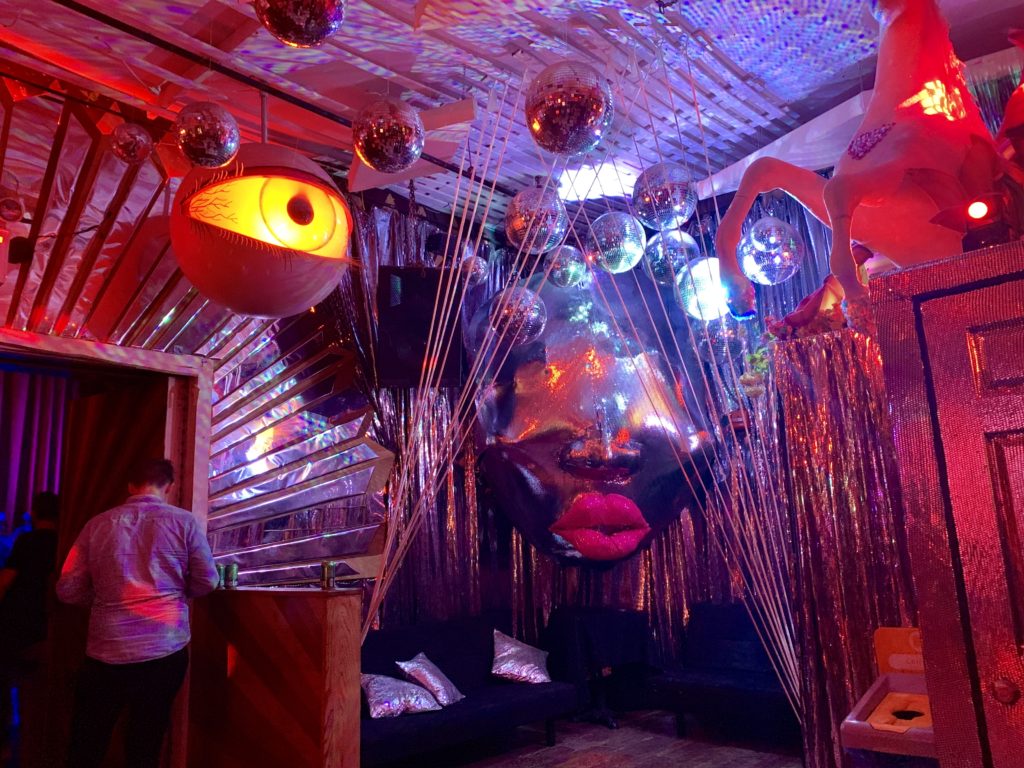
Homeless individuals and empty warehouses in the area stand in contrast with the glitter-clad clientele and jam-packed dance floors of House of Yes. Some locals resent the wave of young people and Manhattan residents who view Bushwick as a trendy party destination. “When I first came out here it was cool, you know?” said one Bushwick resident, Ian Murphy. “These hole-in-the-wall places — anything happened. It was lawless. It was fun. All these places that used to be cool, that are still around, are packed with fucking pretentious people.”
Another Bushwick resident, 27-year-old Conor Hyatt, has mixed feelings about House of Yes. “I think House of Yes was the crux—one of the cruxes—of the change from a poor, culturally diverse neighborhood to a hip, trendy new spot where young people want to move,” he said. Hyatt, a law student who said he cannot afford to visit House of Yes very often,
appreciates the art scene at the club, but has reservations about the way it has impacted the neighborhood. “Is it really a net positive for the neighborhood if the majority of people partaking in it are not part of the
neighborhood?” he asked.
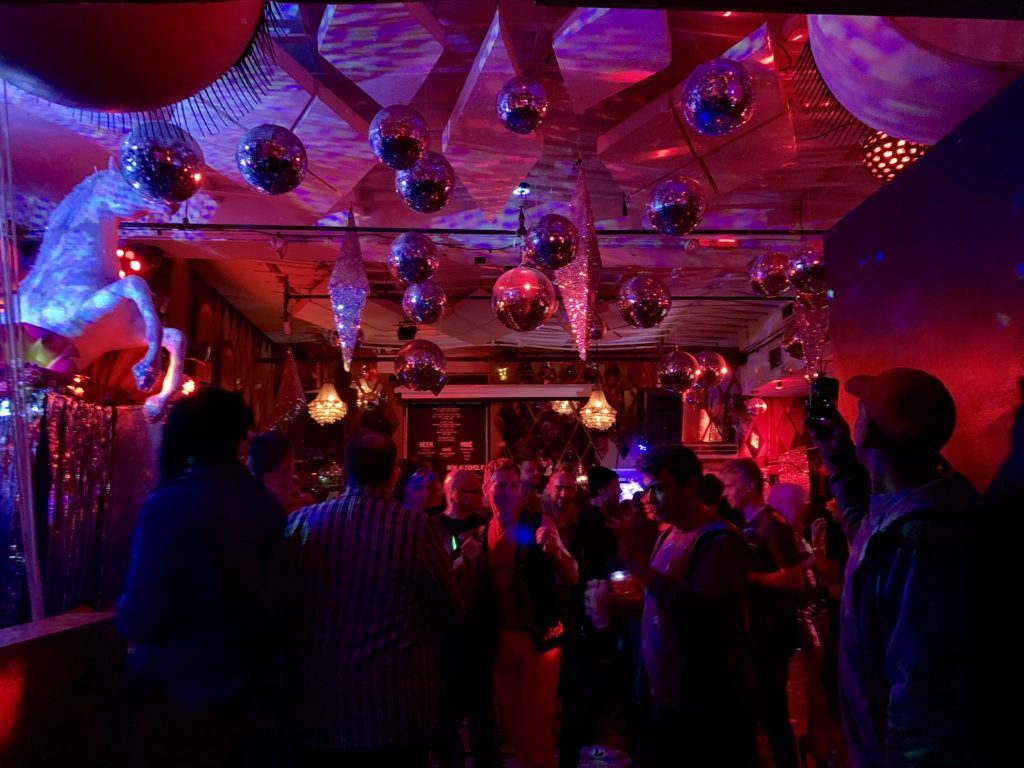
“Neighborhoods change, and people have to be accepting of cultural influxes, but there always needs to be respect for what the cultural context of the neighborhood is before
new residents move in,” said Hyatt, who believes many newer Bushwick residents don’t engage with the local culture. “They spend their money very specifically. They spend it in restaurants and clubs that may not be owned or representative of the residents of the neighborhood.”
Some venues make an effort to blend in. “It’d be smart for us to charge a cover, but we want this space to be very community oriented,” said Brenden Shwartz, a street art gallery manager at
the Brooklyn Beer Garden on Wyckoff Ave. “We want everyone to be able to experience it.”
Business owners like Velez say they try to look out for neighborhood residents, but can’t deny that newer venues like House of Yes have helped business. Scott McNair, owner of the nearby bar, Starr Bar, says he works to acknowledge the role his business plays in the community.
“It’s important to understand the context of what you’re building within,” said McNair. StarBarr often hosts social justice events and gives 10 percent of its profits to a sister venue, Mayday Space, a community organizing center.
Community organizations in Bushwick, like Mi Casa No Es Su Casa, point to local legislation as a means of preserving culture and protecting the neighborhood’s most vulnerable residents. The organization has been advocating against the
city’s rezoning plan for Bushwick, which some fear will leave residents without affordable housing.
The push to preserve the culture of Bushwick hasn’t slowed the growth of its entertainment industry. Like those little bits of glitter you can’t seem to shake after a night at the venue, it appears House of Yes is sticking around for a while.

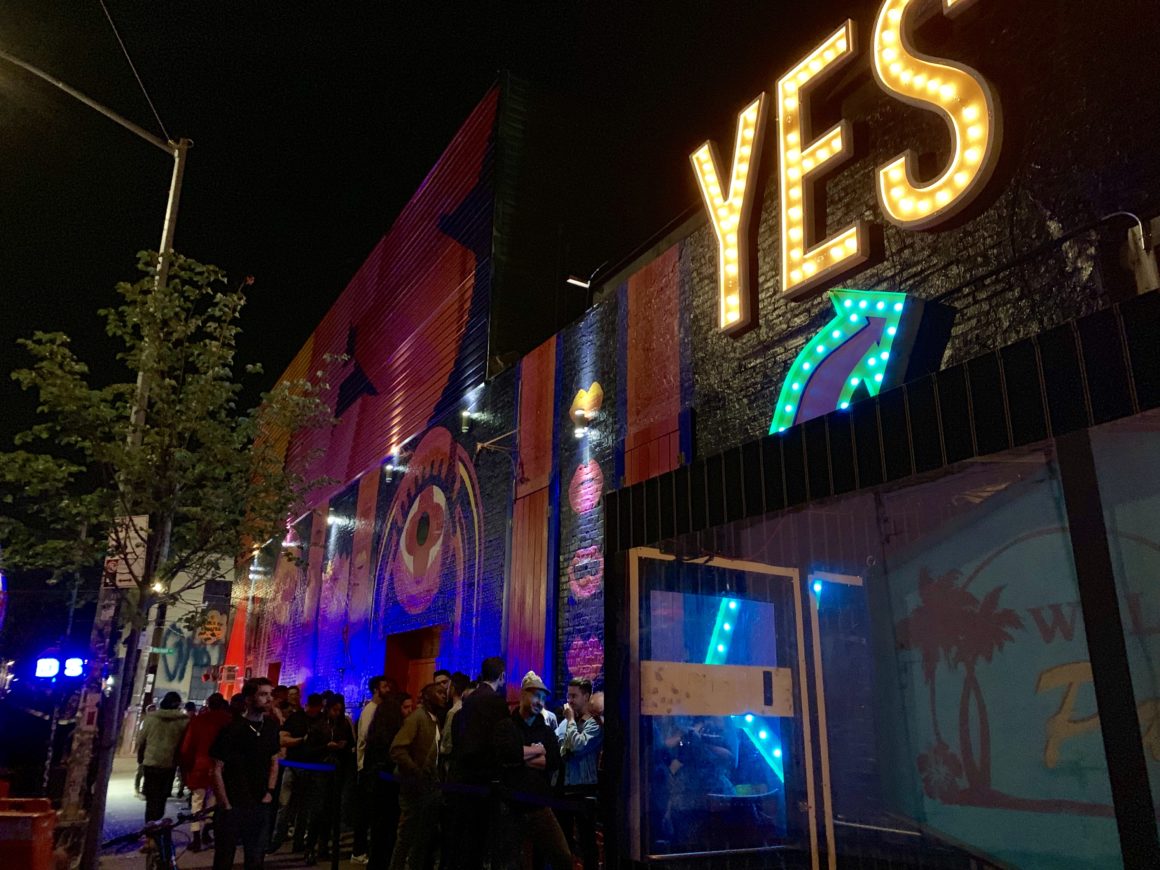
Leave a Reply